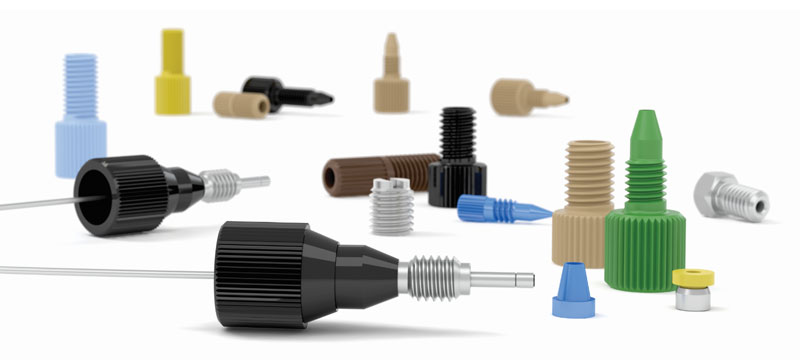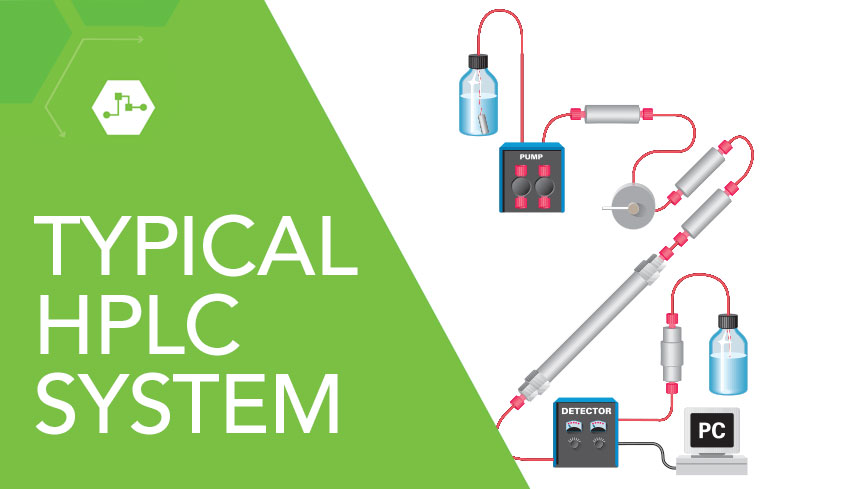

High Performance Liquid Chromatography (HPLC) System Components
What components are part of a standard HPLC system?
- Solvent Reservoir: Holds the chemical solution (mobile phase) that moves throughout the high performance liquid chromatography system
- Pump: Pulls the mobile phase from the reservoir and pushes it out to the rest of the system
- Injection Valve: Introduces the sample into the mobile phase
- Column: A tube usually filled with small beads coated with a chemical substance designed to act a chemical “filter” (stationary phase) that interacts with the sample and enhances separation
- Detector: Views the sample components that are separated in the column as they are carried along by the mobile phase
- Recorder: Translates the signal generated by the detector into a graph called a chromatogram
- Waste Reservoir: Safely collects all the mobile phase and sample components after they pass through the HPLC system
Now that you understand the basics of the key HPLC system components, let’s run through the whole process. First, a mobile phase is prepared. Then the pump moves the mobile phase through the system, where it encounters the sample and carries it through the column. Inside the column, the sample components selectively interact with the mobile phase and the stationary phase, separating into groups of like molecules as they move through the column. Leaving the column, the sample component groups then pass through the detector, which “sees” the components and sends a signal to the recording device, which in turn collects and processes the data. The waste reservoir then collects the fluid for disposal. In summary, this popular analysis technique allows analysts to separate a sample of known or unknown composition into its components, and then quantifies how much of each component is present in the sample.
Discover more detail about HPLC and how it works in our Fittings 101 Guide on pages 32 – 39.

What is another important, but often overlooked component of a HPLC instrument?
The answer is fluidic connections. With numerous connections in an instrument, failure at even one fitting can result in a costly service call. To mitigate this risk, it is best to choose a fluidic connections supplier that focuses on strict testing protocols to ultimately provide high quality, reliable components. The right supplier can provide you with peace of mind that you can connect your tubing, fittings, and other components safely and experience minimal maintenance moving forward.
At IDEX Health & Science, we offer a broad collection of low pressure fittings for systems that operate under 1,000 psi, as well as high pressure fittings that deliver next generation technology to give you maximum performance in even the most demanding applications.
Learn More About Our Fluidic Connections for High Performance Liquid Chromatography

